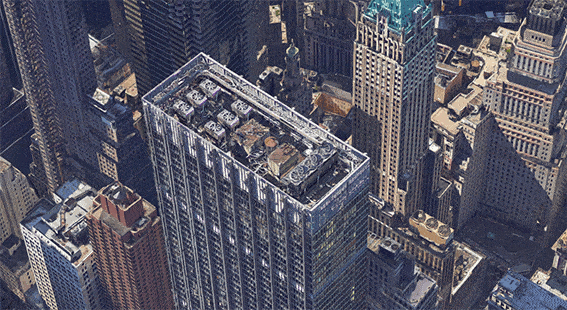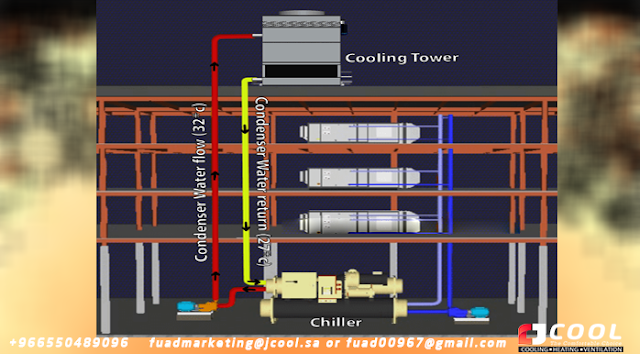Why are cooling towers used?
If you look at the roof of most commercial high-rise buildings, or even around industrial sites and power plants, you'll notice those big boxes with a fan on top. They are cooling towers and their purpose is to reject unwanted heat from a building or process.
To help understand how cooling towers work, let's look at an example of a typical, common cooling tower found in a city office building.
These cooling towers are called "open" or "wet" cooling towers because the water in the pipes exits the piping (system) as it is sprayed inside the cooling tower, deliberately soaking the interior of the tower to cause evaporation and heat loss. The water will be able to leave this circuit, which is why it is said to be "open" and therefore it is said that the jet of water to soak the interior of the tower is "wet".
You can also find "closed" or "dry" cooling towers. This type does not spray water from the condenser and the water remains in a sealed pipe at all times. Therefore, the water cannot leave the system and is known as the "closed" type.
The cooling tower receives hot water from the chiller at a temperature of, for example, 32 °C (89.6 °F). This water is known as condenser water because it collects its heat in the "condenser" of the chiller.
The cooling tower must cool this water to approximately 80.6 °F (27 °C) so that it can return to the chiller and capture more heat.
Basic understanding of how they work..
As the hot water from the condenser enters the cooling tower, it is sprayed in small droplets through the fill pack, increasing the surface area of the water and allowing for more heat loss.
The fan at the top of the cooling tower draws in air from the bottom of the tower and moves it up and out of the unit. In the opposite direction to the flow of hot water from the condenser. This air will carry the heat out of the cooling tower and into the atmosphere.
Did you understand that?
If YES, great! You're ready for Part 2, "How Cooling Towers Work," which is very detailed, so have a pen and paper handy.
If NOT, don't worry, we also have a video tutorial below that might help you.
- TAGS
- #HVAC
- #hvac_basics
- #hvac_system
- #pump
- #pump_design
- #pumps
Do you need help maintaining and repairing an air conditioner?
It's hard to keep cool when the air conditioning isn't working. Whether it's repairs, air conditioning, regular maintenance, or assistance with choosing your new unit, JCOOL professionals can keep you comfortable all year
Jamjoom Cooling Systems Factory (JCOOL) products (condenser coil - evaporator coil - heat exchanger - air conditioning - cold evaporator - cooler - industrial air cooler - tube bundle - air heat exchanger)
Make a reservation immediately with the maintenance team before the summer heat intensifies.
Let us help you with a lot of maintenance and installation work on your next project.
To request the service: -
Jamjoom Cooling Systems Factory
Jeddah - Second Industrial City - Street 49
fuadmarketing@jamjoomarcool.com
Eng/ Abu Hussam
#heatExchangers #condensers #evaporators #coolers #coils #airDucts #chiller's #jcool #Saudi_industry #cooling #ventilation #radiators #jcool #jamjoomCoil #jamjoom_cooling_systems_factory #jamjoom #saudiArabai #coolingtowers #cooling_tower #coolingcoils #heat_exchanger #heatexchanger #coolingsystems #cooling #chiller #hvac #jamjoom_hvac #jamjoom_cooling #global_cooling_tower #Brand_Saudi_Arabia #made_in_Saudi_Arabia #🇸🇦
- TAGS
- #pump
- #pumps #jcool #jamjoomCoil #jamjoom_cooling_systems_factory #
TAGS- pump system
- #centrifugal_pump
- #pump
- #pump_design
- #pumps





Comments
Post a Comment